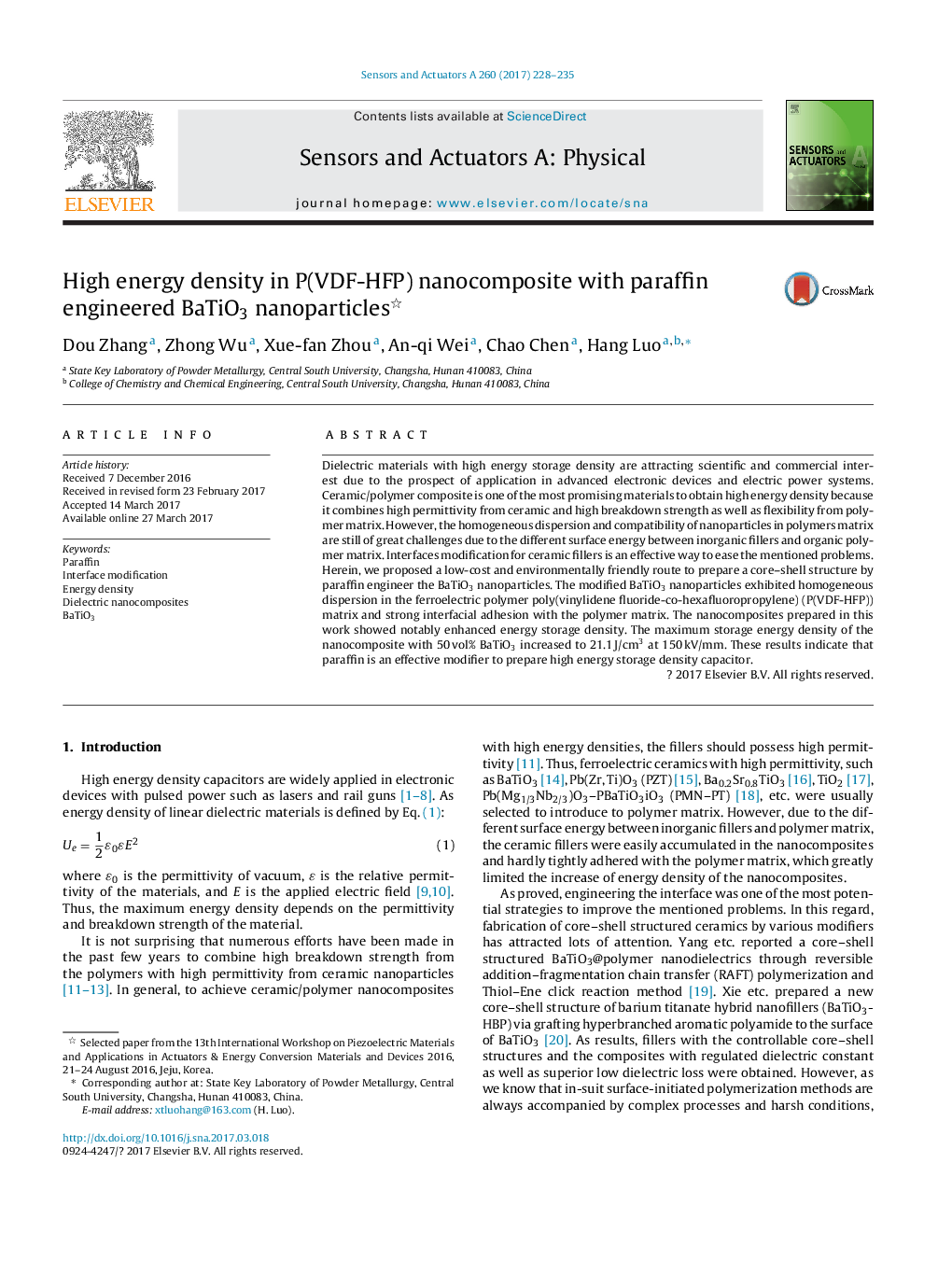| Article ID | Journal | Published Year | Pages | File Type |
|---|---|---|---|---|
| 5008303 | Sensors and Actuators A: Physical | 2017 | 8 Pages |
â¢A novel surface modifier of paraffin is reported to engineer the surface of BaTiO3 nanoparticles.â¢The modified BaTiO3 homogenously dispersed in the P(VDF-HFP) nanocomposites.â¢The nanocomposites possess super-high energy storage density of 21.1 J/cm3 at 150 kV/mm.
Dielectric materials with high energy storage density are attracting scientific and commercial interest due to the prospect of application in advanced electronic devices and electric power systems. Ceramic/polymer composite is one of the most promising materials to obtain high energy density because it combines high permittivity from ceramic and high breakdown strength as well as flexibility from polymer matrix. However, the homogeneous dispersion and compatibility of nanoparticles in polymers matrix are still of great challenges due to the different surface energy between inorganic fillers and organic polymer matrix. Interfaces modification for ceramic fillers is an effective way to ease the mentioned problems. Herein, we proposed a low-cost and environmentally friendly route to prepare a core-shell structure by paraffin engineer the BaTiO3 nanoparticles. The modified BaTiO3 nanoparticles exhibited homogeneous dispersion in the ferroelectric polymer poly(vinylidene fluoride-co-hexafluoropropylene) (P(VDF-HFP)) matrix and strong interfacial adhesion with the polymer matrix. The nanocomposites prepared in this work showed notably enhanced energy storage density. The maximum storage energy density of the nanocomposite with 50Â vol% BaTiO3 increased to 21.1Â J/cm3 at 150Â kV/mm. These results indicate that paraffin is an effective modifier to prepare high energy storage density capacitor.
